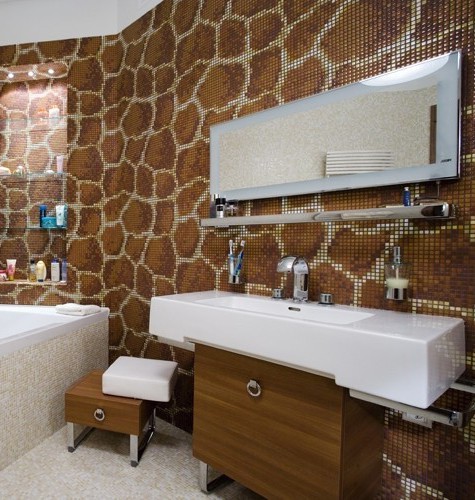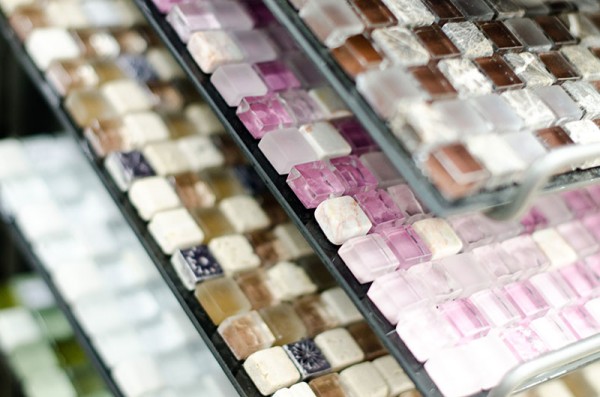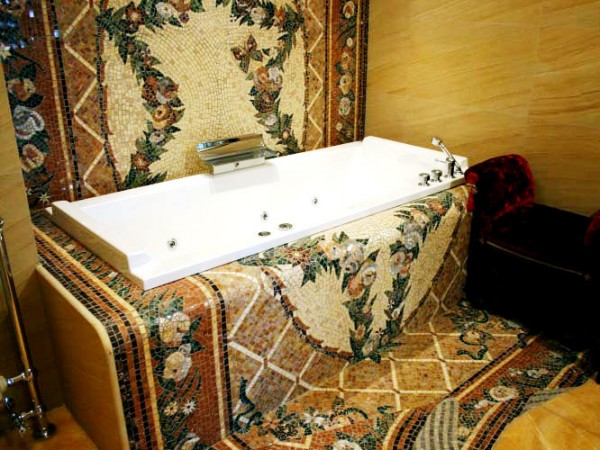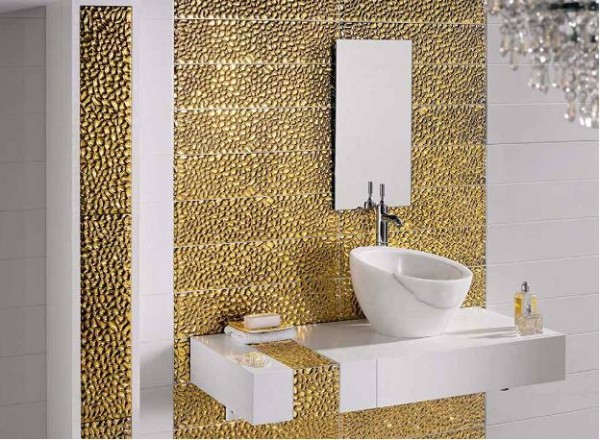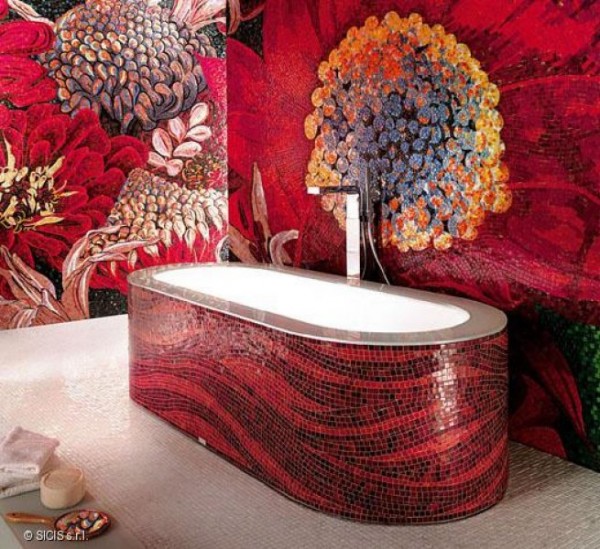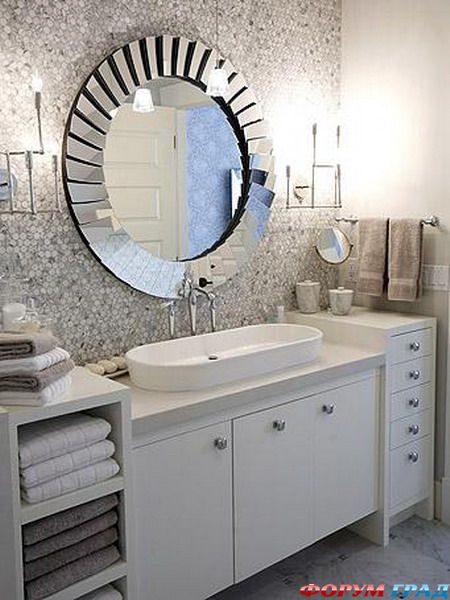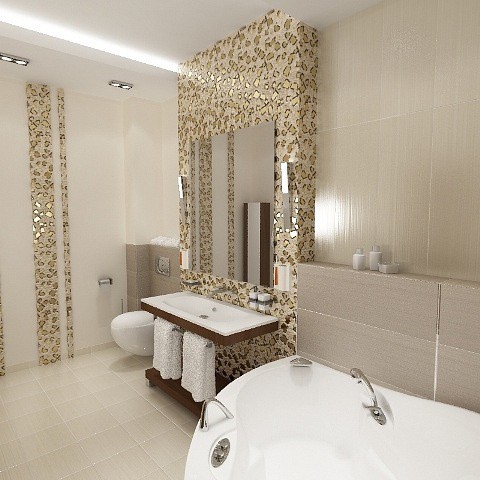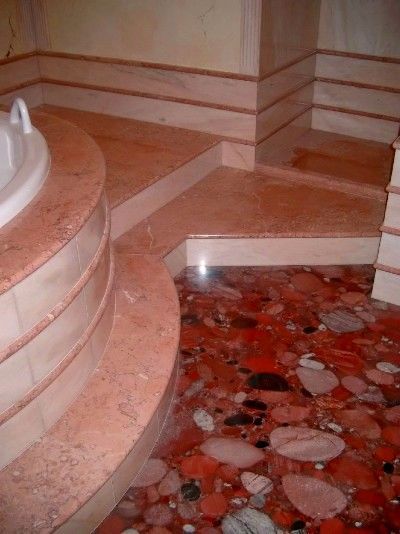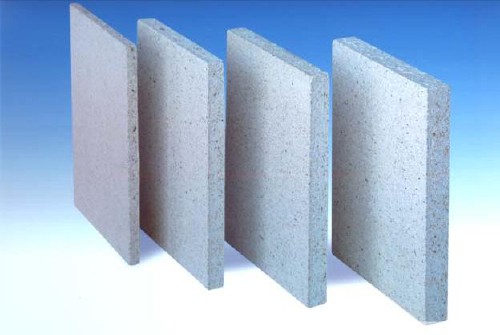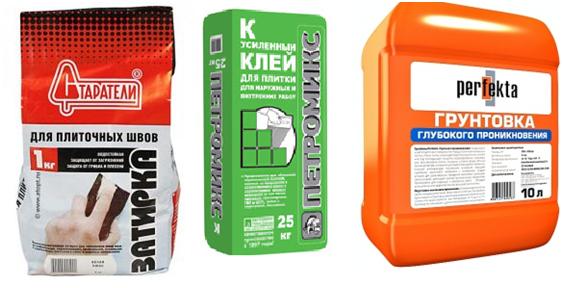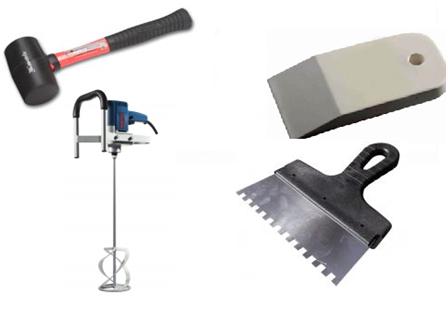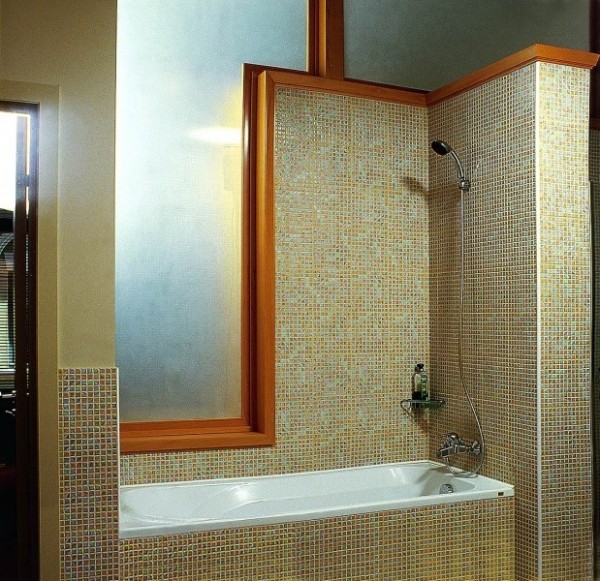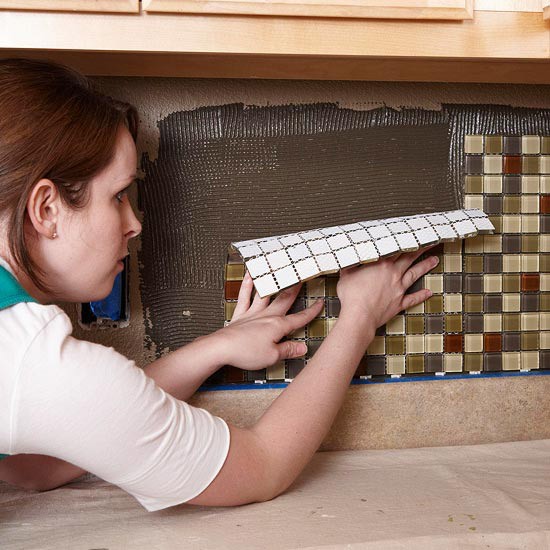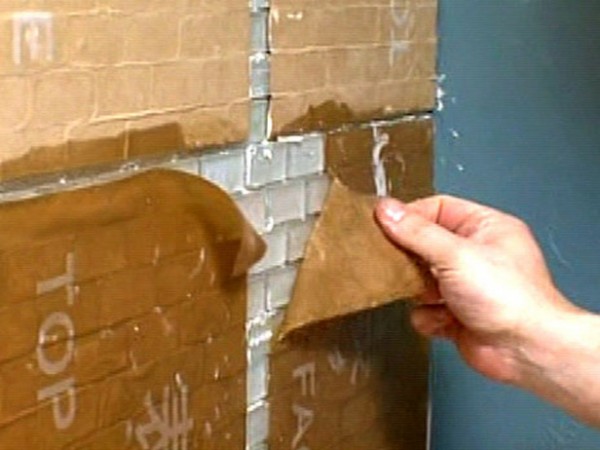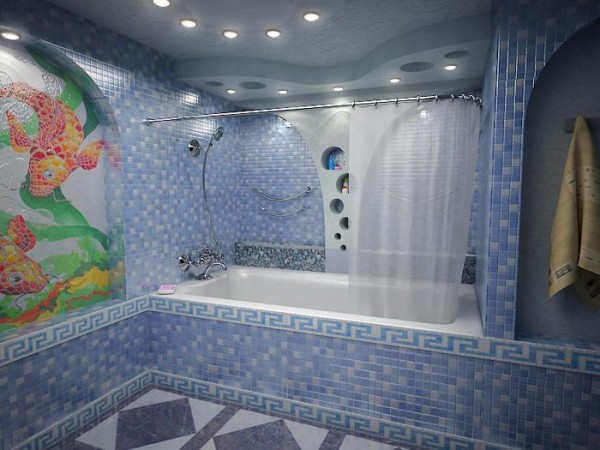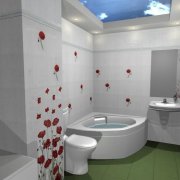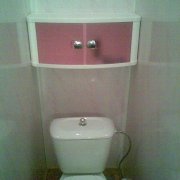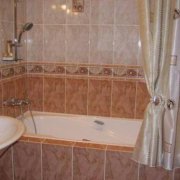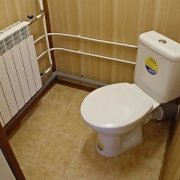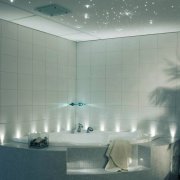Mosaic decoration of the bathroom - how to do it yourself
Mosaic, perhaps, can be called the most ancient kind of decoration - it is more than five thousand years old. She comes into fashion from time to time, like all the well-forgotten old.
Nowadays, this type of decoration is used only in kitchens and bathrooms. This is due to the fact that the materials from which the mosaic is made are not afraid of moisture.
And about the decorative virtues and the diversity of the surfaces obtained, we can’t even talk. In this article we will tell you how the bathroom is decorated with mosaic, what types of this decoration material exist, and what is its essence.
The content of the article
What is a mosaic?
Mosaic is the design style of a surface, using small fragments to create a pattern or image. The basis for the creation of mosaics are various materials: ceramics, glass, stone, mica.
By the way, there is a wooden mosaic, only it is used in other rooms.
And we will consider options suitable for the bathroom:
- In ancient times, the mosaic was laid out in one small piece, there were no other technologies. Such work takes a lot of time, and the modern approach to any workflow is characterized by the motto: “Time is money”.
- Manufacturers of finishing materials have long figured out how to speed up and facilitate the technology of mosaic decoration. Individual items are stacked on a paper or mesh substrate, and sold as tiles.
The price of this option is not an example cheaper than a loose mosaic.
- The range of typesetting mosaics is quite wide: it can be monophonic, multi-colored, translucent, with various inclusions, with a ready-made pattern. Such tiles can be sold in a kit that makes up the whole image - an aquarium, a starfish or, for example, a dolphin.
- Finishing the bathroom with fine mosaics gives much more opportunities to create an original interior.
Individual design lovers do not want to see typical pictures on the walls. And the cost of this work is far from scary for everyone. - Fully spread the whole room from a loose mosaic does not make sense. It is most often used to decorate the outer surface of the bathtub, tabletops, mirror frames, panels on the floor or wall.
- The shapes of the already mosaic are often square and rectangular, sometimes in the form of a polyhedron. Ceramic options are plentiful: they are very popular and inexpensive.
Other types of mosaics
Glass
Glass mosaic tiles have a translucent structure, more delicate shades. Its surface, perfectly smooth and shiny, very durable - it is very difficult to break it.
To achieve aesthetic value, mother-of-pearl and gilding can be added to the glass elements.
It looks like the finish is expensive on the photo, and it’s also worth it. But for any product there is a buyer.
Smalt
There is an even more expensive option - this is a mosaic of smalt. This material is made of glass, in which metal oxides are added and pressed under the influence of high temperatures.
Smalt is at the same time similar both to metal, and to glass - brilliant, bright and opaque.
Colorful paintings and panels are created precisely from such a mosaic. In its aesthetic properties, it is simply unique.
Mirror
As an option, sometimes use a mirror mosaic.Most often this is done to decorate some elements of the interior, or in combination with other types of mosaics to create a specific pattern.
A continuous coating of the surface with a mirror mosaic will only be appropriate to look on the ceiling.
To visually expand the space, in a small bathroom one wall can be made of such a coating. This will give a feeling of spaciousness.
Metal
You can make a mosaic from pieces of metal. Today it is very fashionable and quite original.
The surface of the metal mosaic can be matte, or polished to a mirror shine.
They produce it from stainless steel and aluminum, and anything - even gold - can imitate a mosaic of these metals.
There are also mosaic hybrids, which are a “hamburger” made of thin foil placed between two pieces of glass. This is the most expensive type of mosaic.
A rock
One cannot but mention the natural stone, which from ancient times was used for mosaic decor. There is a mosaic of various types of stone - both ordinary pebbles, and expensive options: marble, onyx, jasper and even malachite.
Naturally, the cost of such a mosaic directly depends on the value of the material used. Finishing a bath with a mosaic made of natural stone is most often limited to only some interior elements.
This can be a frame around the mirror, a section of the wall near the bath, a panel on the floor or wall.
Pebble panel on the floor
As for pebbles, it serves not only as an excellent decor. A panel of sea pebbles is laid out on the bathroom floor so that the stones remain convex rather than buried in the surface.
Thus, the feet can be massaged, and this greatly stimulates blood circulation.
Mosaic Tile
Of course, in order to make a panel with a complex ornament from loose mosaic, you have to turn to specialists. If you need to tile the bathroom with a mosaic tile, you can do it yourself, and our small instruction will help you with this.
So:
- In order to get a high-quality decorative coating, all surfaces must be pre-aligned. Not everyone can do this on their own using plaster mortar. It will be easiest to sheathe the walls with cement-bonded particleboards (DSP).
- This is an environmentally friendly building material with a fairly high bending strength. DSP is made from a mixture of wood chips, wood chips and cement, without using any substances harmful to humans.
The mixture is pressed and subjected to industrial drying, as a result of which it hardens and gains strength.
- Plates are easily cut and mounted on a wooden crate. How to do it right, you can watch the video.
Cement particle boards are much cheaper than waterproof gypsum board, they are not afraid of moisture or mold, and are an ideal base for any finish.
What do you need
Before you begin, you need to be sure that you have everything you need. In addition to the mosaic itself, you must immediately buy a primer (concrete contact), dry glue and grout for joints.
All this is usually sold in the same place where ceramic tiles are sold.
- For tiled work, you will need some tools: a notched and rubber spatula, a mallet, a construction mixer for mixing glue. If you need to split the mosaic chip into parts, you will have to use wire cutters.
- Prepared surface of the walls with a brush or roller, treat with a primer. This is necessary in order to improve the adhesion of the adhesive solution to the base surface.
If this is not done, after a while your mosaic will simply begin to fall off. - The primer must dry completely, only after that you can proceed to gluing the tiles. If it is plain, without a pattern, it is much easier to lay it - just glue it in even rows.
- The tile that should make up the ornament, or any image, must be laid according to preliminary marking. To do this, you need to lay it out on the floor in the order that it should make the image; measure it as accurately as possible and transfer the measurement to the wall.
- Having finished with the preparatory work, dilute the glue in the containers. To the dry composition you need to gradually add water in the ratio indicated on the package, stirring the solution with a construction mixer.
- With a notched trowel, apply the finished adhesive to a small area of the wall, and a little to the tile itself. Press it to the surface and make sure that the mosaic sheets lie flat, do not slip.
All subsequent work will depend on how the first row is laid. - Now you need the help of a rubber mallet (mallet). Lightly tapping the tile with a mallet, press the tile into the solution, and remove the excess surplus with a rubber spatula.
- Having finished the row, the glue needs to be allowed to grasp - twenty minutes will be enough. Then you need to remove the protective paper layer by moistening it with a wet sponge.
If you notice that any seam has moved apart, correct the tile until the glue has completely dried.
- Grouting can be started no earlier than two days later. Dry grout mix is diluted according to the same principle as glue.
With a rubber spatula, the composition is distributed at the seams, removing excess grout, about an hour after its application. After another fifteen minutes, the mosaic surface is polished with a dry rag. - Having finished decorating even sections of walls, you can begin to finish the slopes, countertops, and the outer surface of the bath. Fortunately, mosaic tiles can be easily divided into desired fragments.
Mosaic finish of the bathroom is a rather painstaking work. The main thing is not to rush, just keeping the time necessary for the glue to set.
If you did everything right, the result will reward you for your patience and efforts: the bathroom will delight you with a beautiful and original interior for many years.
